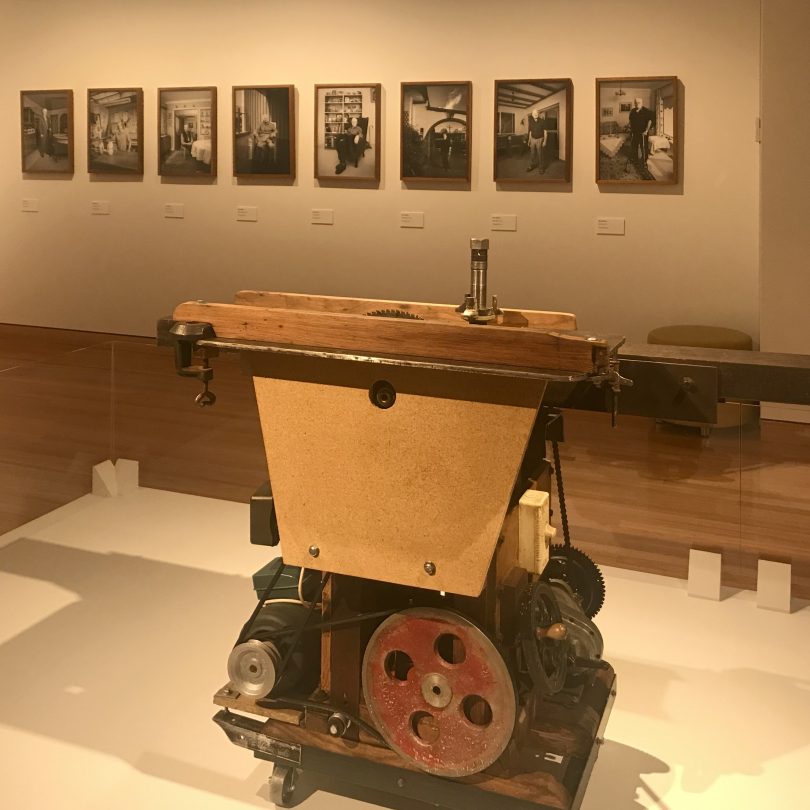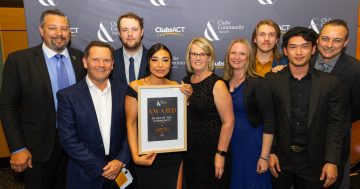
Jennings Germans travelled by train to Canberra. Photo: Supplied.
“We’re stuck with Canberra whether we like it or not, so we might as well do it properly”, said Prime Minister Robert Menzies in 1950.
After the foundation stone was laid in 1926, not much had happened in Canberra for decades: there were only 20,000 people here and if the city was to grow into a national capital of any stature, it would need development and housing.
That, in turn, required plenty of manpower and some serious skills, both of which could be hard to source post-war.
One of the answers to that particular resourcing problem would come in a somewhat unlikely form: the group of adventurous young builders who would become known as the ‘Jennings Germans’.
The story of their commitment to the city, often lifelong, is told in an exhibition at CMAG that traces their arrival in a small city, their community and friendship, and their contribution to the city’s growth.

Josef Wurzer’s multi-purpose woodworking machine was homemade and used in the construction of the first block of flats in Queanbeyan. Photo: Genevieve Jacobs.
The idea of bringing a group of young German tradesmen to build the necessary housing was the brainchild of construction company AV Jennings, although in the immediate postwar climate it wasn’t necessarily a popular choice.
But ‘Bert’ Jennings saw an opportunity to grasp the Germans’ outstanding technical skills, education and strong work ethic, so the company set to persuading 150 young men to uproot their lives and move to a small, conservative, sleepy city on the other side of the world.
The offer was an attractive one for young men struggling to find a future in a war-torn nation: double the standard wage, a two-year guaranteed contract and fares that could be paid back gradually.
Breakfast, lunch and dinner were provided by hostel accommodation, although the freezing cold or boiling hot buildings were something of a shock.

The Jennings Germans brought with them strong cultural ties to their homeland. Photo: Genevieve Jacobs.
There were plenty of challenges for a group of fit, eager young men, among them homesickness. The exhibition includes many of the cultural legacies the group brought with them – including lederhosen. The Harmonie German Club was a product of their arrival, as was a very popular band, a children’s dance group and a long-running choir that would eventually sing at the opening of the new Parliament House.
Several of them entered the Australian skiing championships in 1952, and one of them, Siegfried Bollinger, eventually became the Australian slalom racing champion. They’d been supported by the YWCA, which purchased a bus as snow transport although log books show that much of the bonding happened over bus breakdowns rather than on the slopes.

The Jennings Germans made a rich contribution to social life while helping build the city. Photo: Supplied.
Some of the Jennings Germans brought fiancees out from Germany while others married local girls, and the exhibition includes a wall of wedding photos and images of family life. To the mild astonishment of neighbours, a number of traditional German houses even sprung up in the suburbs as the Jennings Germans put down roots.
Indeed, as the exhibition makes clear, that’s what happened to most of them. Rather than returning to Europe when their two-year contracts expired, the majority stayed, often here in Canberra where the young builders also helped lay the foundations of a successful post-war multicultural community.
Building a Life: The Jennings Germans story is open at the Canberra Museum and Gallery until 18 July.





















